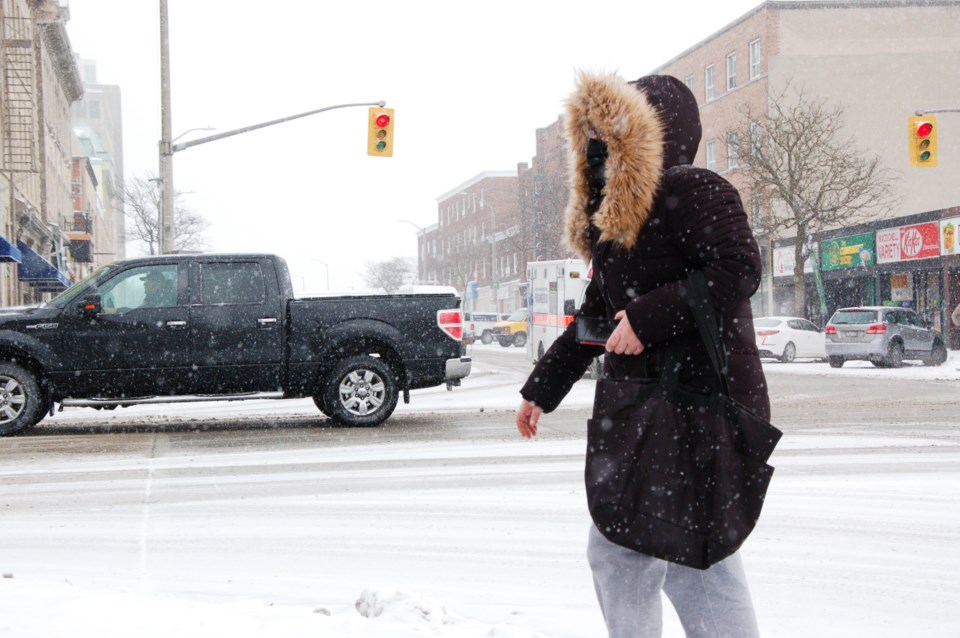City council put its stamp of approval Monday evening on a plan aimed at easing traffic congestion and increasing active transportation throughout Guelph for the next 30 years.
The new Transportation Master Plan (TMP) seeks to improve connectivity between the various modes of transportation, reduce vehicular greenhouse gas emissions by getting people out of personal vehicles and improve safety for people of all abilities.
In order to achieve those goals, the plan calls for protected bike lanes to be installed along some sections of road, with potential road widenings to accommodate those bike lanes as well as possible transit-only lanes, increased winter maintenance of trails and more.
“I’m very happy with the overall plan,” commented Coun. Cathy Downer, who put forward amendments to enhance consultations with the University of Guelph and Heritage Guelph regarding the potential future widening of Gordon Street between College Avenue and Stone Road.
“The university is a major partner of the City of Guelph,” she added, noting the university’s objection to any widening along that stretch of road, no matter what the purpose.
The plan would also see the non-auto modal share target, which includes all daily trips made without automobiles, set at 42 per cent by 2051.
Prior to its approval, council heard the master plan has the support of a variety of local individuals and groups, including Transit Action Alliance of Guelph (TAAG), Guelph Coalition for Active Transportation, Guelph Cycling Club (formerly Speed River Cycling Club), Guelph Hiking Trails Club and Dr. Nicola Mercer, chief medical officer of health for Wellington-Dufferin-Guelph Public Health.
“It is encouraging that the Transportation Master Plan lays out network improvements and policies that aim to make walking and cycling safer and more convenient,” Mercer said in a letter to council “The 2051 mode share targets of 10 per cent cycling and 15 per cent walking, if met, could have significant positive impacts on public health in the community.”
“The movement of people, not vehicles, is at the heart of this plan,” commented Steven Petric of TAAG.
The plan was not without its objectors, including two representatives of Families for Rolling Hills, who argued the plan does little to address existing traffic concerns in the area of Victoria Road South and Clair Road East, where residential intensification is planned.
Others called for action against “cut through” traffic along Niska and Whitelaw roads.
The cost to design and implement complete and connected roads moving forward, as laid out in the plan, could be up to seven per cent above the average cost of road reconstruction costs this year and reach up to a total of $26 million over 10 years, city staff say.
The long-term cost to maintain roads is estimated at $376,200 annually by 2031.
Sticking with current road plans would cost between $65 million and $105 million.
A vote on the plan was split into two parts.
The overall plan as a whole, including associated policies and strategies, was approved 8-3 with councillors Dominique O’Rourke, Mike Salisbury and Christine Billings opposed.
The second vote was on clauses that refer projects to upcoming city budgets for consideration and move the plan forward for related Official Plan amendments which outline specific potential projects. As well, instruct staff to consult with the U of G and Heritage Guelph before initiating studies looking into the possible widening of Gordon Street between College Avenue and Stone Road and College Avenue between Edinburgh Road and Gordon Street, inform council of plans to widen roads before projects move forward, and that council approval be needed before widening along that stretch of Gordon moves ahead.
Salisbury was the only holdout on the second vote.
Coun. Dan Gibson was absent from the meeting.
Prior to the main vote, Salisbury put forward the idea of changing Whitelaw Road from its collector status to that of a local road, but that motion failed 3-8. He argued it doesn’t meet the current definition of a collector road, as it’s not wide enough and the speed limit is set to be reduced to 40 km/h from 50 km/h.
By leaving it labelled as a collector road in the TMP, it becomes a self-fulfilling prophecy because that document will contribute to decisions made in the future.
However, staff noted relabelling the road won’t change how people choose to use it.
“It will function by people’s behaviour as a collector now matter what we call it,” said deputy CAO Jayne Holmes.
Salisbury was joined in support by Coun. Bob Bell and Billings.
